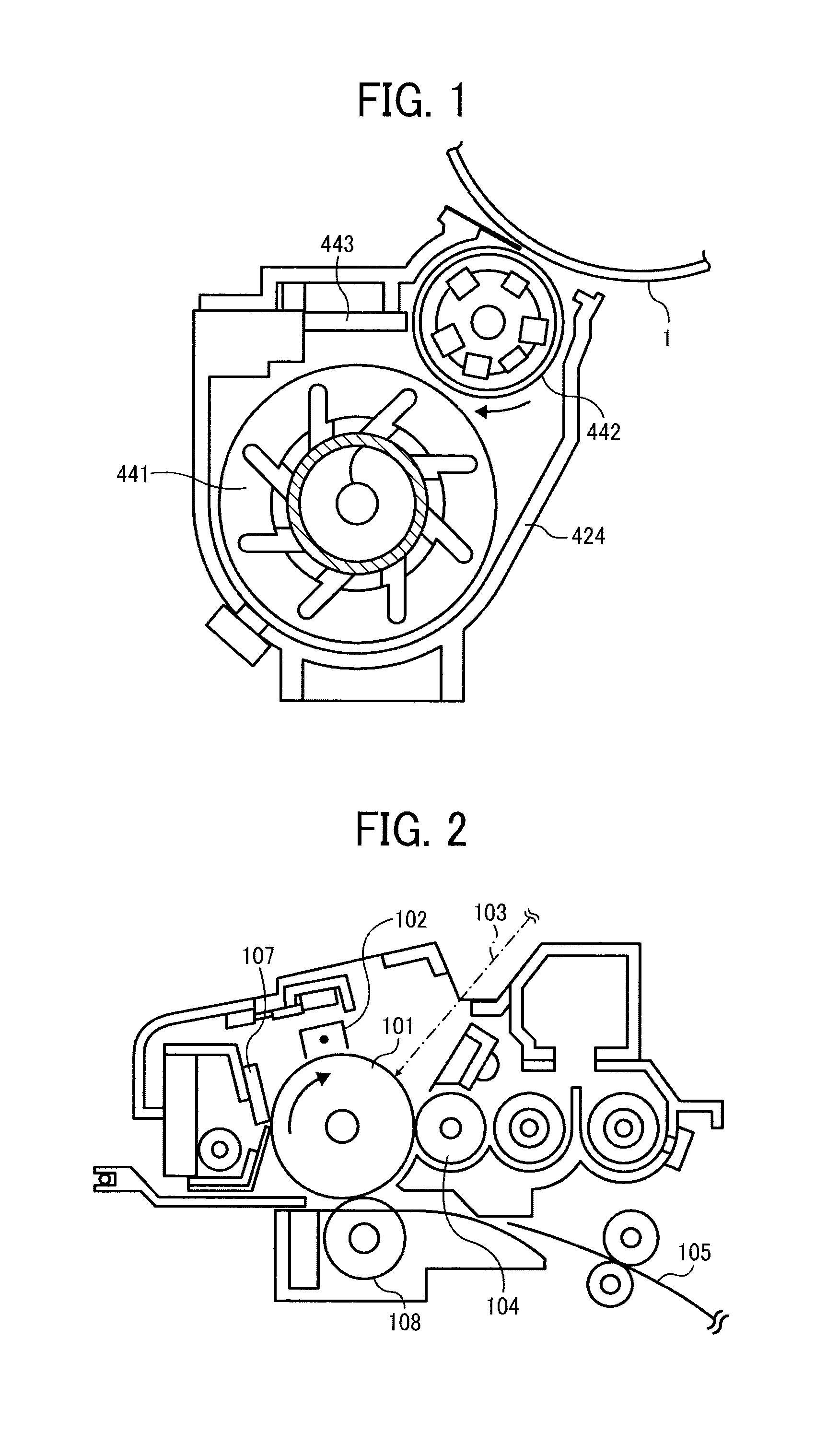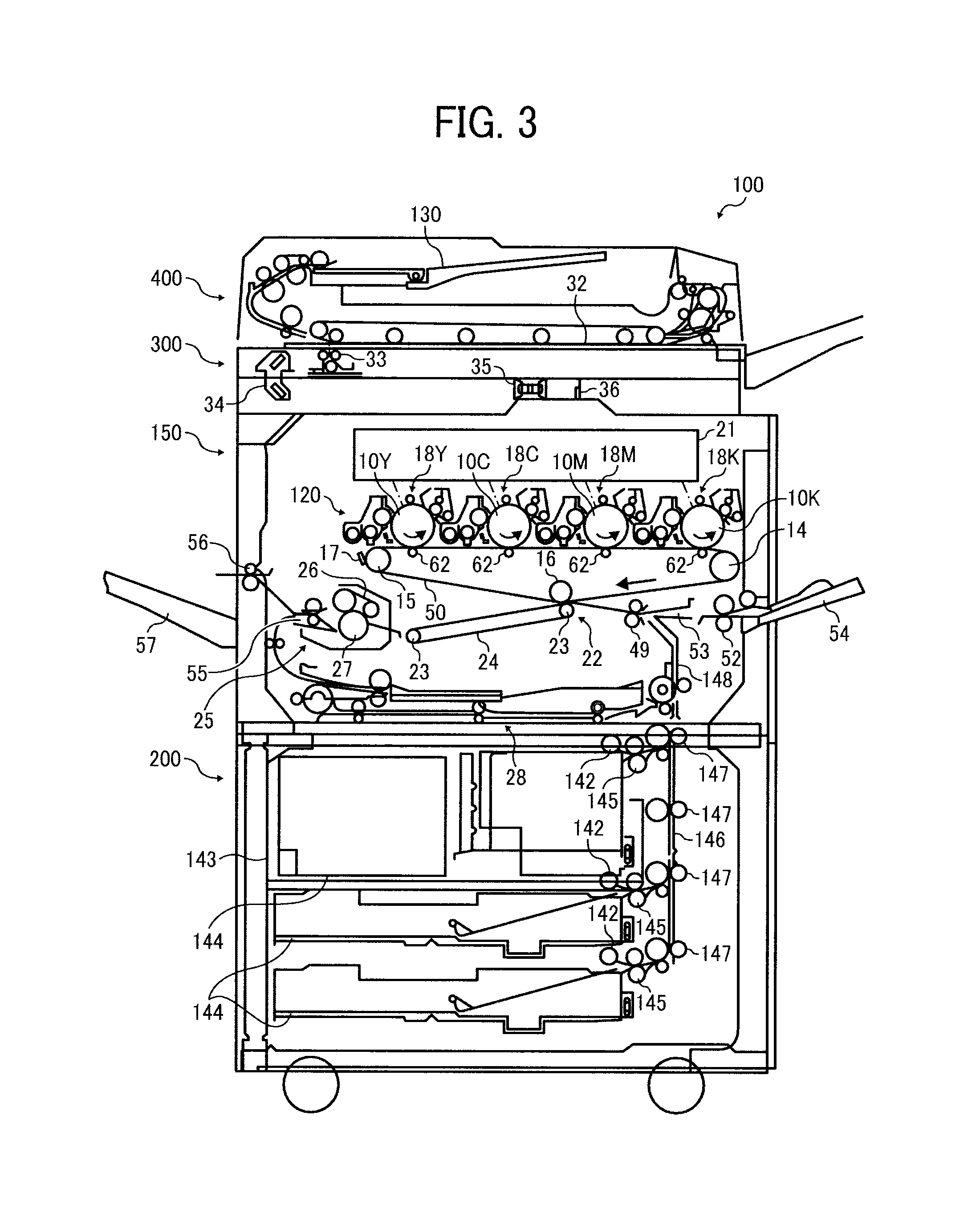Toner for electrophotography, developer and method of preparing the toner
a technology for electrophotography and toner, applied in the field of toner for electrophotography, developer and method of preparation, can solve the problems of reduced heat resistance storage stability of toner, voc (volatile organic compound) cannot be reduced by polymerization method, and achieve high low-temperature fixability
- Summary
- Abstract
- Description
- Claims
- Application Information
AI Technical Summary
Benefits of technology
Problems solved by technology
Method used
Image
Examples
preparation example 1
Preparation of Crystalline Resin A1
[0274]A reaction tank equipped with a condenser, a stirrer, and a nitrogen inlet tube was charged with 241 parts by weight of sebacic acid, 31 parts by weight of adipic acid, 164 parts by weight of 1,4-butanediol, and as a condensation catalyst, 0.75 parts by weight of titanium dihydroxybis(triethanolaminate), and the resulting mixture was allowed to react for 8 hours at 180° C. under nitrogen gas stream, with removing the generated water. The mixture was then gradually heated to 225° C., and was allowed to react for 4 hours under nitrogen gas stream, with removing the generated water as well as 1,4-butanediol. The resultant was further reacted under the reduced pressure of 5 mmHg to 20 mmHg until Mw of the resultant reached about 18,000, to thereby obtain Crystalline Resin A1 (crystalline polyester resin) having a melting point of 58° C.
preparation example 2
Preparation of Crystalline Resin A2
[0275]A reaction tank equipped with a condenser, a stirrer, and a nitrogen inlet tube was charged with 126 parts by weight of 1,4-butanediol, 215 parts by weight of 1,6-hexanediol, and 100 parts by weight of methyl ethyl ketone (MEK), followed by stirring. To the resultant, 341 parts by weight of hexamethylene diisocyanate (HDI) was added, and the resulting mixture was allowed to react for 8 hours at 80° C. under nitrogen gas stream. Subsequently, MEK was removed by evaporation under the reduced pressure, to thereby obtain Crystalline Resin A2 (crystalline polyurethane resin) having Mw of about 18,000, and a melting point of 59° C.
preparation example 3
Preparation of Crystalline Resin A3
[0276]A reaction tank equipped with a condenser, a stirrer, and a nitrogen inlet tube was charged with 123 parts by weight of 1,4-butanediamine, 211 parts by weight of 1,6-hexanediamine, and 100 parts by weight of methyl ethyl ketone (MEK), and the resulting mixture was stirred. To this, 341 parts by weight of hexamethylene diisocyanate (HDI) was added, and the resulting mixture was allowed to react for 5 hours at 60° C. under nitrogen gas stream. Subsequently, MEK was removed from the reaction mixture by evaporation under the reduced pressure, to thereby obtain Crystalline Resin A3 (crystalline polyurea resin) having Mw of about 22,000, and a melting point of 63° C.
PUM
| Property | Measurement | Unit |
|---|---|---|
| size | aaaaa | aaaaa |
| boiling point | aaaaa | aaaaa |
| length | aaaaa | aaaaa |
Abstract
Description
Claims
Application Information
 Login to View More
Login to View More - R&D
- Intellectual Property
- Life Sciences
- Materials
- Tech Scout
- Unparalleled Data Quality
- Higher Quality Content
- 60% Fewer Hallucinations
Browse by: Latest US Patents, China's latest patents, Technical Efficacy Thesaurus, Application Domain, Technology Topic, Popular Technical Reports.
© 2025 PatSnap. All rights reserved.Legal|Privacy policy|Modern Slavery Act Transparency Statement|Sitemap|About US| Contact US: help@patsnap.com



